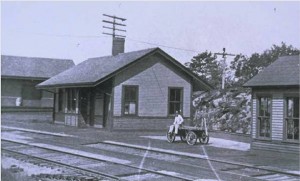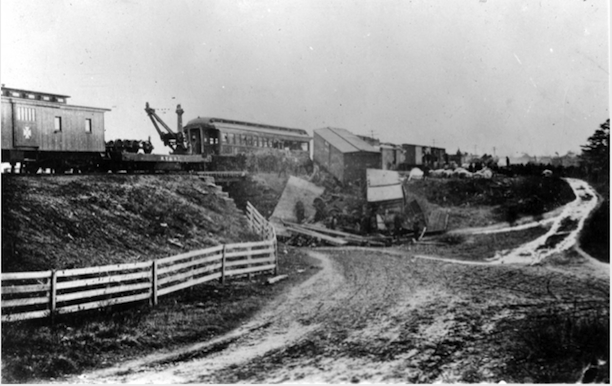Thompson, Connecticut, was the site of one of the most horrific railway accidents in American history. The catastrophe claimed the lives of two railway workers, injured hundreds of passengers, and remains one of the only accidents in US history to involve four trains.
Early on the morning of December 4, 1891, a railway dispatcher in Putnam, Connecticut, faced a dilemma. He had three trains needing to use the local eastbound track toward Boston. The first was the slow No. 212 freight train. Scheduled to depart after it were the Boston-bound Long Island and Eastern States Express and, also, the Norwich Steamboat Express. In an era of intense competition in the railroad industry, the focus of most railway operators was on getting passengers to their destinations as quickly as possible. On the morning of December 4, this meant finding a way to get the two express passenger trains around the lumbering freight train.
Decision of Putnam Dispatcher Proves Fatal
With no traffic coming on the westbound track, the Putnam dispatcher opted to allow the No. 212 freight to temporarily proceed east on the westbound track until the two passenger trains passed it, at which point it would switch back to the eastbound track. Unfortunately for everyone involved, no one bothered to notify the railroad crew at the East Thompson Railway Station.
Taking advantage of the lack of traffic, the crew at East Thompson were busy on the westbound track coupling cars for the Southbridge Freight. To the crew’s horror, at 6:40 am, the No. 212 Freight suddenly emerged from the fog around the sharp corner at East Thompson Station and slammed into the engine of the Southbridge Freight. The crash destroyed both engines, but there were no fatalities. The most urgent dilemma was that one of the jackknifed railcars landed on the eastbound section of the track.

Railroad station, East Thompson, early 1900s – Archives & Special Collections, University of Connecticut Libraries
Minutes later, the eastbound Long Island and Eastern States Express came around the corner at 50 mph and smashed into the jackknifed railcar. The engine of the Express spun off the track, flew over an embankment, and crashed into a telegraph pole, killing engineer Harry Tabor and fireman Jeremiah Fitzgerald.
Four Trains Involved in Wreck
Amid piles of the twisted metal and the cries of the injured, crews and survivors tried to grapple with the unimaginable scene before them. Suddenly, someone remembered the expected arrival of the Norwich Steamboat Express. Officials sent a flagman running down the track to warn the Norwich train—but it was too late. It, too, came barreling around the corner and at 6:45 am plowed into the back of the Long Island and Eastern States Express—setting it ablaze.
Despite the violent nature of the accident, Tabor and Fitzgerald somehow emerged as the only fatalities. Hundreds were injured, however, and the accident tore up roughly 500 yards of track and caused hundreds of thousands of dollars in damage. The devastation proved so extensive, in fact, that the proprietors never bothered to replace the track, instead choosing to reroute local rail traffic around the scene. Authorities eventually razed the station facilities in East Thompson and today the rail line serves as a nature trail for hiking and other recreational activities.









